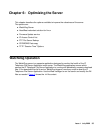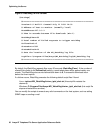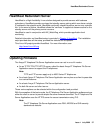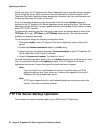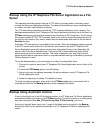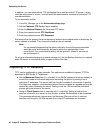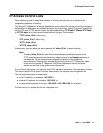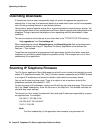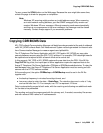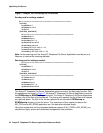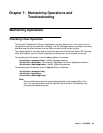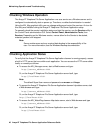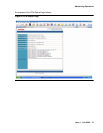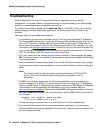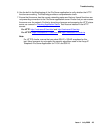
Optimizing the Server
42 Avaya IP Telephone File Server Application Reference Guide
Overriding Downloads
IP telephones that are reset unexpectedly might not access the appropriate upgrade and
settings files. In this case, the telephones default to a mode which users can find unacceptable,
such as having missing features or user-defined options.
Using either a protocol-specific access list or a general access list controls server access. You
can also bypass these control mechanisms and force a default upgrade and settings back to the
telephone. Doing so prevents the telephone from requesting more file downloads in these
conditions.
The server checks for the existence of one of two files in the TFTP/HTTP/HTTPS directory
“fxd_upgrade.scr” and “fxd_settings.txt”.
When requesting the normal 46xxsettings.scr and 46xxsettings.txt files and access would
otherwise be denied, the Avaya IP Telephone File Server Application server delivers the
“fxd_xx….” files instead.
These files are expected to be programmed with parameters suited to the failure mode and
conducive to just restoring basic telephone operation quickly. File examples are in the “docs”
subdirectory of the application.
Scanning IP Telephone Firmware
The File Server application Status Web page has a built-in scan function that checks the current
status of IP telephone firmware. MV_Scan_Console invokes a sequential set of SNMP queries
to a range of IP addresses and stores the results in both detail and summary format.
You can set the start and stop range. There is an option to set a maximum count of the
telephones searched with a default = 1000.
To search a range of IP addresses, create a text file with the start and stop range. Place the text
file in the “Scan” subdirectory. Enter the file name in the Web form. This method overrides the
start and stop range settings.
The format is a list of ranges formatted with start and stop IP addresses separated by a space
on separate lines. For example:
192.168.0.1 192.168.0.128
192.168.35.27 192.168.35.97
10.0.0.1 10.0.0.50
Note:
Note: The Scan subdirectory of the application has examples of a parameter file.




